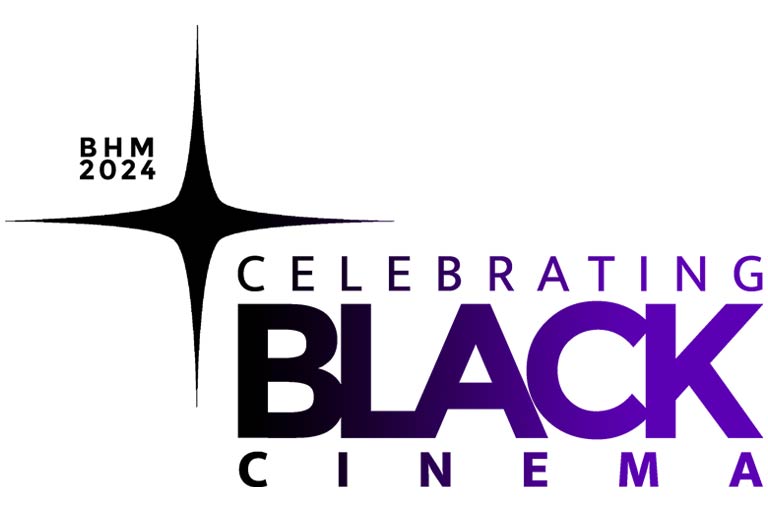Jan 22
Film Screening: Gumbo Coalition
IMU Whittenberger Auditorium
-
The Indiana University Neal-Marshall Black Culture Center, Black Film Center and Archive, and the city of Bloomington invite you to celebrate Black Cinema this Black History Month! From the stage to the screen, Black actors, filmmakers, writers, and directors have left an indelible mark on the entertainment industry and, most importantly, our lives. They have inspired us to tell our stories, preserve historical moments, celebrate Black love and joy, laugh aloud, and channel our passion and energy into causes greater than ourselves. And, of course, they remind us of the brilliance of Black artistry, encouraging us to take our rightful place on the big screen because we deserve it. From classics that take us back to our childhoods and span generations to contemporary takes on films that allow us to (re)imagine our Black futures, we are rolling the credits all Black History Month and giving a standing ovation to our favorites in Black cinema. Let’s go to the movies!

Jan 22
Film Screening: Gumbo Coalition
IMU Whittenberger Auditorium
-
Apr 11
50th Anniversary African American Dance Company Concert Part 1
114 E. Kirkwood Ave. Bloomington, IN 47408
-
Apr 12
50th Anniversary African American Dance Company Spring Concert - Part 2
114 E. Kirkwood Ave. Bloomington, IN 47408
-
Check out this list of iconic black films curated by the NMBCC and black film center and archive teams.
Visit Bloomington's Black History Month page for more information on campus and city events.
Peter Guralnick
Sweet Soul Music: Rhythm and Blues and the Southern Dream of Freedom
Boston: Little, Brown, c1999
Michael Haralambos
Soul Music: The Birth of a Sound in Black America
New York, N.Y.: De Capo Press, [1985], c1974.
Eric V. Copage
Soul Food: Inspirational Stories for African Americans
New York: Hyperion, c2000
Joyce White
Soul Food: Recipes and Reflections from African-American Churches
New York: HarperCollins, c1998
Kevin Coval, Quraysh Ali Lansana, & Nate Marshall
The BreakBeat Poets: New American Poetry in the Age of Hip-Hop
Chicago: Haymarket Books, [2015] ©2015
Mahogany L. Browne, Idrissa Simmonds, Jamila Woods; [foreword by Patricia Smith]
Black Girl Magic
Chicago, Ill.: Haymarket Books, [2018] ©2018
Susan Rice
Tough Love: My Story of the Things Worth Fighting For
New York: 37 INK; Simon & Schuster, 2019
Donna Marie Williams
Black Eyed Peas for the Soul: Tales to Strengthen the African American Spirit and Encourage the Heart
New York: Simon & Schuster, c1997
Gerri Hirshey
Nowhere to Run: The Story of Soul Music
New York, N.Y., U.S.A.: Penguin Books, 1985, c1984
Linda Villarosa
Body & Soul: The Black Women's Guide to Physical Health and Emotional Well-Being
New York: HarperCollins, c1994
This list was curated by Portia K. Maultsby, Ph.D., Laura Boulton Professor Emerita, Ethnomusicology and Professor Emerita, Folklore and Ethnomusicology. Prof. Maultsby served as the founding director of the IU Soul Revue and established the Archives of African American Music and Culture.
Introduction to Maultsby’s Twenty Favorite Soul Music Songs
In 1966, Black college students began rejecting the non-violent and integrationist approach advocated by Martin Luther King and his Southern Christian Leadership Conference (SCLC). As an alternative, they embraced the Black Nationalist ideology of Malcolm X embodied in the self-sufficiency teachings of the Nation of Islam. Kwame Ture (aka Stokely Carmichael), chairman of the Student Non-Violent Coordinating Committee (SNCC), coined the term “Black Power” during a 1966 speech in Seattle about this ideology.
Black Power symbolizes group solidarity, community empowerment, and racial pride. Its proponents equated solidarity and empowerment with economic self-sufficiency and political control. Notions of racial pride required identification with Africa--the motherland. In this context, Black Power evolved as a political movement to which black people assigned social and cultural meaning under the rubric of “soul.” First used in 1964 by African American business owners to prevent looting during social unrest in inner cities, they placed signs in store windows that read “soul brother.” A year later in 1965, Black disc jockeys began to institutionalize the term soul by identifying Black-oriented stations as “soul radio.” The concept of soul, according to historian William L. Van Deburg, “was closely related to Black America’s need for individual and group self-definition.” Soul quickly evolved into a cultural movement defined by an ideology encompassing behavior, fashion, music, dance, visual art, foodways, language, and cultural institutions (radio and records companies). Musically, soul is defined by lyrics of social and political commentary and/or a specific sound rooted in Black gospel music--vocal and instrumental stylings and harmonic and rhythmic structures.
Despite the earlier institutionalization of the term “soul” by Black Americans, the mass media did not give full recognition to its use until 1967 when Billboard, the leading trade music magazine, published the first issue of an annual series titled “The World of Soul” to document “the impact of Blues and R&B upon our musical culture.” In 1968, Esquire magazine published an article, “An Introduction to Soul,” and Time magazine (June 28) featured Aretha Franklin on its cover as the subject of a lengthy article entitled “Lady Soul Singing It Like It Is.” In 1969, Billboard changed the name of its “Rhythm and Blues” charts to “Soul.” This acceptance of the soul label by the mass media and music industry signified an initial victory for the Black Power Movement. White institutions began adopting a term first coined, sanctioned, and used by African Americans to describe themselves, their unique cultural productions, and their cultural institutions.
Maultsby’s Top 20 Soul Music Songs